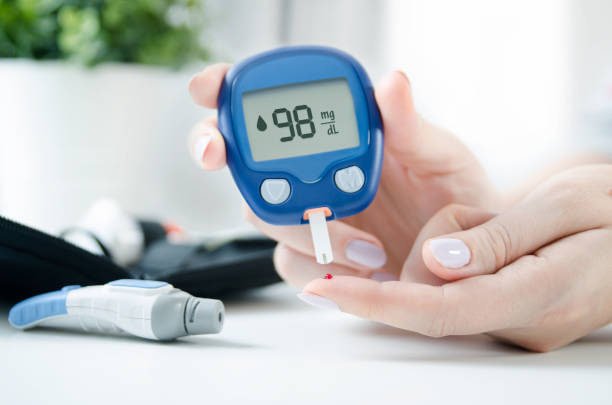What Are Normal Blood Sugar Levels in Diabetes?
Takeaways:
“Normal” blood sugar levels commonly refer to the blood sugar quantity in most healthy individuals.
For people with diabetes, “normal” fasting blood glucose level ranges between 4.4 to 7.2 mmol/L (80 to 130 mg/dL), while two-hour post-meal blood glucose level should be < 10.0 mmol/L (<180 mg/dL).
Keeping tight control over blood glucose levels is crucial to living your best, healthiest life with diabetes.
You can test your blood sugar levels at home in two ways: 1) glucometer and 2) CGM. Which you choose depends on your preferences, lifestyle and health status.
If you have diabetes, what normal (or what doctors would term “healthy”) blood sugar levels look like can differ from someone without diabetes. This is, for lack of a better word, normal. But let’s face it: simply knowing this isn't helpful. Instead, this newly gained knowledge is likely to bury you under an avalanche of questions, including:
Just how different are we talking about? Like, in terms of quantifiable numbers?
How would you know if you’re within the range of normal blood sugar levels for people with diabetes? Why should you care about this?
What should you do when your blood sugar levels are out of whack?
Fortunately, this article’s got the answers to all that and more.
What is the “normal” blood sugar range? (Short answer: It depends)
When medical professionals talk about normal blood glucose levels, they’re most commonly referring to the blood sugar quantity in the majority (specifically, 95%) of healthy individuals at two points when:
Eight hours have passed since they've consumed anything other than water (i.e., fasting) — a normal fasting blood glucose level for an individual without diabetes should be <5.6 mmol/L (<100 mg/dL)
Two hours have passed since a meal (i.e., post-meal)—a normal two-hour post-meal blood glucose level for an individual without diabetes should range between 3.8 to 7.7 mmol/L (70 to 139 mg/dL)
While individuals with diabetes can achieve those normal blood sugar ranges, it's not strictly necessary for good diabetes control. Here's what "normal" blood sugar ranges for those with diabetes look like according to the 2022 “Standards of Medical Care in Diabetes” from the American Diabetes Association (ADA):
Fasting blood glucose level: 4.4 to 7.2 mmol/L (80 to 130 mg/dL)
Two-hour post-meal blood glucose level: < 10.0 mmol/L (<180 mg/dL)
Does it matter if you’re within “normal” blood sugar levels?
Yes, 100%. Poorly controlled diabetes can result in persistent high blood sugar levels, increasing the risk of the following health complications:
Heart and blood vessel (cardiovascular) disease
Nerve damage
Kidney damage
Eye diseases (e.g., cataracts and glaucoma)
Hearing impairment
Alzheimer’s disease
How to monitor your blood sugar levels
Okay, so that settles it. To live your best, healthiest life possible with diabetes, you should keep a close eye on your blood glucose levels and maximize the time they stay within those "normal" blood sugar levels. How, though? An excellent first step is keeping up with your regular health check-ins. During these sessions, your primary healthcare provider will likely have you do the A1C test (also known as the hemoglobin A1C or HbA1c test) to measure your average blood sugar levels over the past three months.
If you wish to take things further—and your doctor approves—you could also monitor your blood sugar levels at home by using either of the following:
Blood glucose meter (glucometer or BGM): A portable medical device that tests your blood glucose levels through a fingerstick sample (i.e., you’ll have to prick yourself)
Continuous glucose monitor (CGM): A device that uses a sensor inserted under the skin to measure your blood sugar levels continuously; in more or less real-time
Ultimately, which you choose will depend on several factors, like your:
Budget: Glucometers are typically cheaper and are covered by government subsidies and insurance.
Health status: Unlike glucometers, CGMs may not be suitable for all conditions and patients (e.g., those undergoing dialysis or on certain medications, like tetracyclines).
Pain tolerance: If you’d prefer not to prick yourself or see blood, CGMs are right for you.
Testing schedule: Whether you test once daily, four times daily, or ten times daily, plus the timing at which you test depends on your type of diabetes, your specific treatment plan, and how well-controlled your condition is. The more frequently you must test your blood sugar levels, the more it'll make sense to invest in a CGM (NOVI offers a subscription plan, which is ideal for those who prefer to have their sensors delivered to them on a regular basis. Dexcom G7 is also now available at the NOVI store.)
Causes of blood sugar fluctuations
At the risk of stating the obvious, there's little point in monitoring your blood glucose levels if you're not going to be proactive in better managing them. So, to stay within “normal” blood sugar levels, try your best to avoid the following causes of large spikes and dips:
Spikes: Eating more than 70 grams of carbohydrates per meal (or 30 grams per snack). Overindulging in simple carbohydrates, including those found in fruits. Drinking alcohol. Feeling stressed and failing to get enough good-quality sleep.
Dips: Taking too much insulin. Failing to consume enough carbohydrates. Exercising for prolonged periods without refueling with carbohydrates and skipping meals.
All the little things you do can make a big difference in whether you achieve those "normal" blood sugar levels (and consistently). So, if you'd like step-by-step, personalized guidance from doctors, dietitians, and health coaches on optimizing your nutrition and lifestyle habits for better diabetes control, check out NOVI Magnum.

